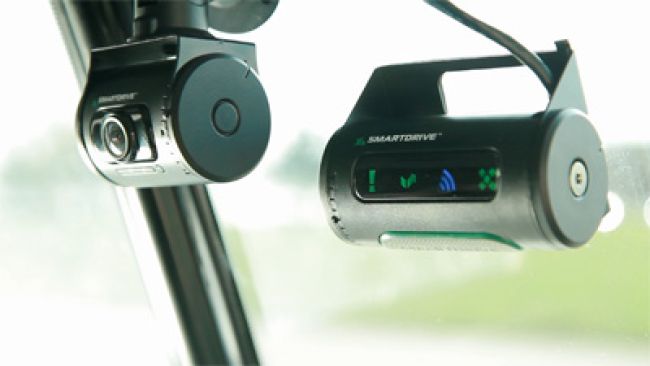
Using Video Monitoring Wisely
Whether the goal is to improve driver performance, protect against fraudulent claims or reduce accident and liability costs, in-cab video monitors can provide utility fleets with another tool to aid their safety improvement efforts.
But if they are installed without laying the proper groundwork with employees or not used wisely, they can also be a waste of money at best and, at worst, a disruptive force that can push safety efforts in the wrong direction, fleet executives cautioned.
Northern Indiana Public Service Co., a NiSource subsidiary, has been piloting the DriveCam system from Lytx (www.lytx.com) in more than 200 systems for over six months, said Chuck Bunting, NiSource fleet manager.
NIPSCO uses both union and nonunion drivers, and the utility’s approach has been to pitch the DriveCam system to them as another layer of safety and a way to help people become better drivers, according to Bunting. “We tell them it’s something else in [their] toolbox,” he said.
“We’re using the system in situations where it’s warranted, where the driver needs coaching,” Bunting continued. “It’s too early in the pilot to have any data on its efficacy. We are looking for the ROI on it, but we have no hard data to date.”
Jason Palmer, president of SmartDrive Systems (www.smartdrive.net), said it’s most important for companies to be transparent when rolling out the system to fleet drivers. “Explain clearly what the system does and what it doesn’t do,” he said. “The biggest mistake a fleet can make is to just install the system and not tell drivers.”
This is especially critical with utilities that often use union workers, he said. “We meet with the company and the union stewards ahead of time to explain the system and work with them. Drivers are concerned that the camera is recording them all the time, so we explain that we’re only recording when something happens, when there is an event.”
System Differences
In-cab video systems differ from telematics and other event data recorders by providing a visual and audial record of actions. In these systems, the in-cab camera is continually on, but video and audio are captured only when a G-force event occurs, such as a hard brake or avoidance maneuver. In Lytx’s case, for example, when an event as determined by the customer occurs, the recorded video and audio, consisting of up to eight seconds before and four seconds after the event, are saved and uploaded to the company’s center for analysis. If the event meets preset conditions, such as driver error, it will be forwarded to the fleet for action.
Fleets can set the event trigger depending on their priorities, Palmer said. “Utilities most of the time have zero tolerance for any cellphone use in the truck. We allow the customer to set the [system triggers].”
Drivers could also actuate it if needed, such as when entering a potential problem area in a rough neighborhood, for instance, explained Greg Lund, director of corporate communications for Lytx.
A basic system consists of cameras that record the driver and what’s occurring in front of the vehicle.
Systems can also tie into other radar-based safety systems, such as those that focus on collision avoidance and lane departure warnings, as well as provide a visual record of outside activities 360 degrees around the truck. Costs range from $500 to $1,000 per unit for hardware and $30 to $50 per unit for monthly subscription costs, according to consulting firm Frost & Sullivan (ww2.frost.com).
The most common use of an in-cab monitoring system is to coach drivers on how to eliminate poor habits, but it also provides a visual record of accidents, regardless of who was at fault.
“Not only are fleets using it for improving driver behavior, but we’re seeing more exonerations where a video can show a driver not at fault for an incident,” Lund said.
The use of these systems has grown substantially over the past few years as technology has improved, and the rate of growth is only going to increase. A June 2015 report from Frost & Sullivan noted that there are about 300,000 units in use worldwide, with North America accounting for about 90 percent of those installations. Growth in the use of onboard safety sensors – such as the previously mentioned collision avoidance and lane departure warning systems – will drive a fourfold increase to between 1.3 million and 1.5 million units by 2021, the report predicted.
“This represents a compound annual growth rate of over 25 percent, which seems reasonable, but we believe there is even more opportunity,” Lund said.
About the Author: Jim Galligan has been covering the commercial truck transportation sector for more than 30 years and has extensive experience covering the utility fleet market. In addition to writing and editing for magazines, his background also includes writing for daily newspapers, trade associations and corporations.

